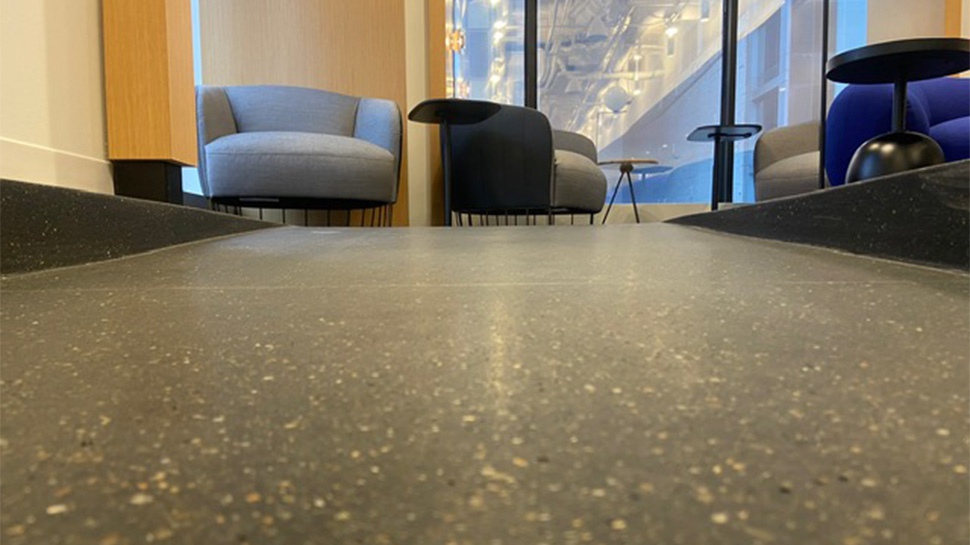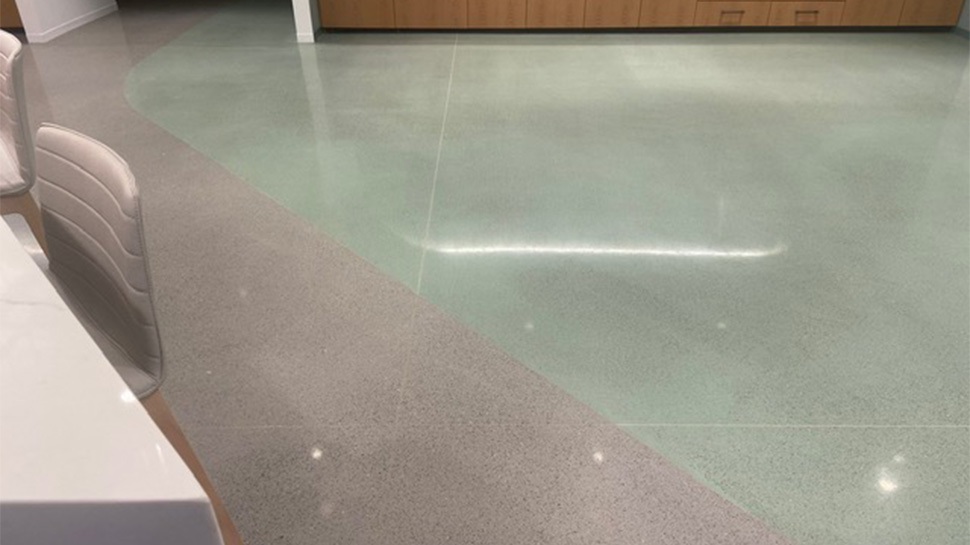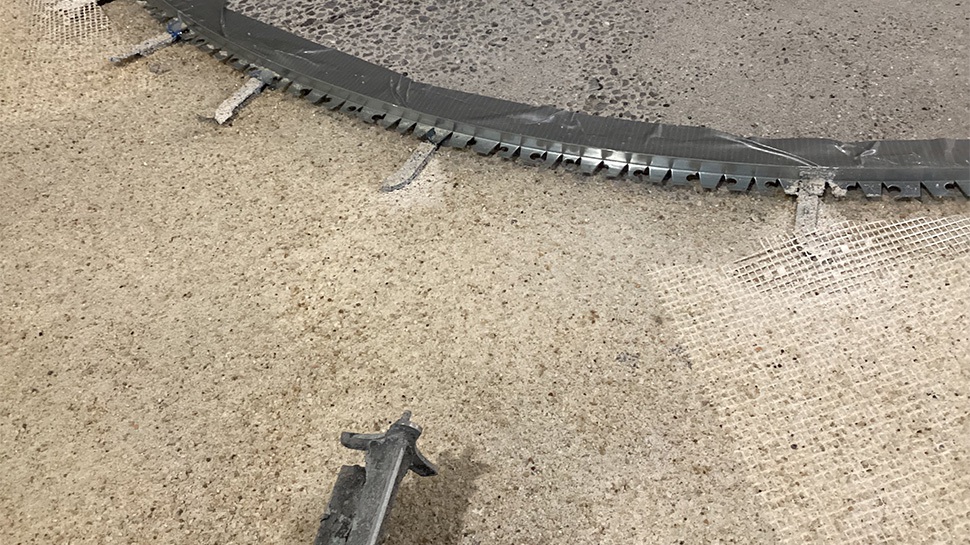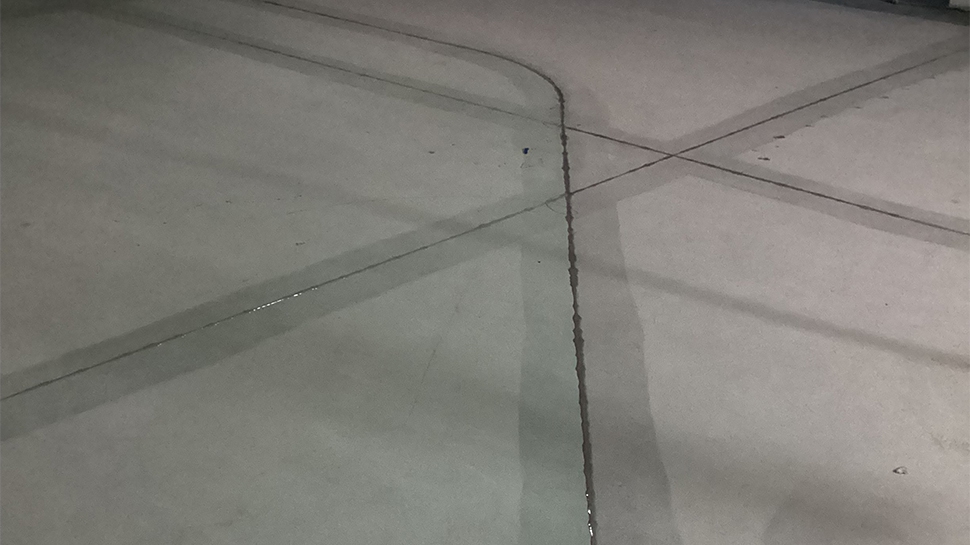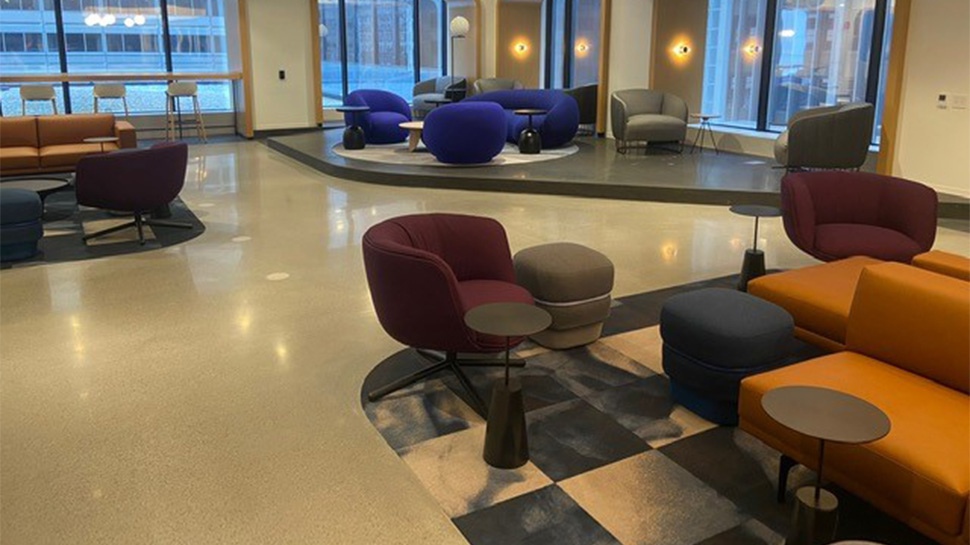
For suburban Chicago flooring contractor Menconi Terrazzo, adding Rapid Set® TRU® PC self-leveling polishable overlays to its service offerings five years ago was a natural evolution in its business model. Terrazzo and TRU PC are installed and finished similarly using similar tools. Both can be customized with color and decorative aggregate. But because of TRU's flowability and high-early-strength cement chemistry, placements are faster and less expensive, enabling Menconi to save a general contractor time and money.
Those two benefits, along with Menconi's success installing terrazzo flooring at United Airlines' O'Hare International Airport gates, helped win the job of resurfacing two of the 19 floors the airline occupies at Willis Tower in downtown Chicago. Family-owned and -operated since 1974, Menconi's placed 150,000 sq ft of TRU PC in North America's third-tallest office building, often pulled in as a subcontractor to general contractor Executive Construction.
With one big exception, the job was fairly routine for Senior Project Manager Clayton Menconi, grandson of founder Primo Menconi, and foreman Sal Diaz, who joined the company more than a decade ago and has devised a highly effective color-separation process (see photos below). Installed in 1974, the concrete substrate was in good shape when crews removed the mastic from the carpet that had been on the floor. They used LevelFlor® self-leveling underlayment to eliminate bird baths and other irregularities, then applied TXP™ Fast epoxy primer. They mixed TRU PC ("polished concrete") with water in a Portamix Hippo, poured and spread the mix, and came back the next day to cut and polish the overlay to a 400-grit finish and seal the surface with Ameripolish 3D HS and SR2 Plus.
But devising a 350-sq-ft stage that wouldn't exceed building weight limitations? And applying a self-leveling overlay to its 6-inch riser? Those were new challenges for everyone involved.
The Big Exception Makes Problem-Solving a Team Effort
United wanted a raised platform accessible by a ramp to showcase things like speakers and bands. Menconi had used TRU products to build ramps, so installing a 4-foot ramp on a grade from floor level to 6 inches wasn't the issue. The issue was the excessive weight of the cementitious LevelFlor material required to create the 350-sq-ft platform. Menconi reduced the load by two-thirds by adding Poraver, an environmentally friendly aggregate made from 100% recycled glass that's used to formulate lightweight concrete.
But that was the easy part. The harder part was figuring out how to successfully use a self-leveling overlay, which is designed for horizontal applications, in a vertical application.
"I remember calling CTS Central Region Contractor Sales Representative Bru Bruington, CTS National Flooring Group Manager Joe Zingale and Sal, and we're trying to figure out what's the best way to do this," says Menconi. "Finally, we just decided to do a slipform and go. And it worked out nicely."
Menconi stiffened the mix by using the lowest recommended water content. Crews framed the riser and, to ensure the mix couldn't seep out, covered all gaps with duct tape or expanding foam. Once the placement had cured, they ground the 6-in riser (apx 50 linear ft) with a Terrco Inc. flexible-shaft grinder.
United was so happy with the outcome that Menconi won the job of resurfacing the client's other 17 floors in Willis Tower.
‘A Manufacturer's Dream'
"Menconi is a model installer of the TRU solution," says Bruington, who's serviced the contractor for more than five years. "Menconi spends a tremendous amount of time on detail from start to finish to ensure they deliver what they said they're going to deliver and what we, as a manufacturer, want contractors to deliver.
"I love working with them because they let me know if something doesn't look right. On a previous Willis Tower job, they called and said, ‘Hey, your product is doing this. We've never seen it do this, so can you come down and look at it?' I went down there right away and together we figured out what it was: Air flow from outside the building was prematurely drying the material and it was cracking at the surface. Some contractors in the interest of time aren't as meticulous. That's why Menconi is so successful."
